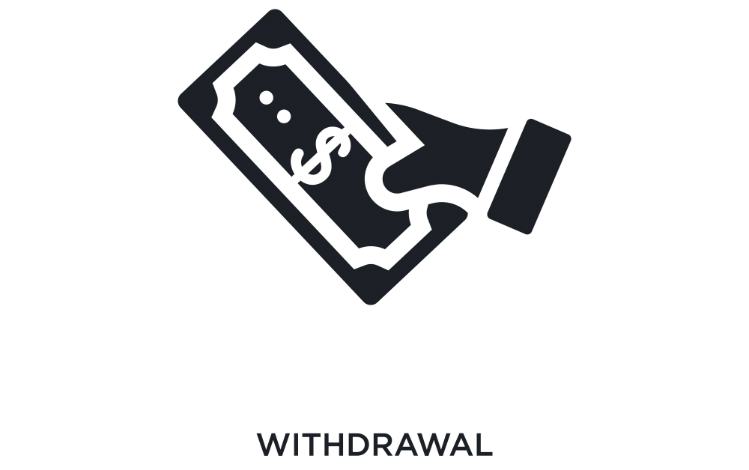A hardship 401(k) withdrawal is a distribution that you make from your 401(k) plan in the case of immediate, financial hardship that cannot be satisfied through any other means.
A 401(k) is designed as a savings tool to put money away for your retirement. With a 401(k) Plan, as you may already know, you cannot take out a withdrawal unless your employment ends (with a Solo 401(k), you can borrow using the loan feature). In some cases, your plan may allow hardship 401(k) withdrawals which allows you to withdraw funds before 59 1/2 years of age. How do you determine if your plan allows hardship withdrawals? Talk to the plan administrator at your job.
401(k) Withdrawal Limitations
In general, in order for a 401(k) plan participant to get access to his or her 401(k) funds, they would need to satisfy a plan triggering event. You simply cannot access those funds while still working for the employer sponsoring the plan. Funds with former employers can always be accessed, since a triggering event occurred once you left the job. The plan triggering events include:
- Reach the age of 59 1/2
- Leave your job
- Plan is terminated
- Rolled funds into 401(k) plan
- Hardship distribution
Once a triggering event is satisfied, you will have access to those funds, however, should you?
Make a Withdrawal Only When it’s Necessary
Of course, withdrawals are usually discouraged unless you’re in dire straits. A hardship 401(k) withdrawal is when you take money from your 401(k) plan that is, according to the IRS, “made on account of an immediate and heavy financial need of the employee, and the amount must be necessary to satisfy the financial need.” You are, however, allowed to take out more than one 401(k) hardship withdrawal.
In order to withdraw funds from your 401(k), you must be able to show you are in hardship. This involves some paperwork to prove the extent of your hardship. You will then provide this information to your plan administrator. Also, be sure to adequately explain your hardships. Situations that are allowable to take a hardship 401(k) withdrawal include, but are not limited to the following:
- eviction
- foreclosure
- funeral expenses
- medical expenses (not covered by your insurance)
- difficulty paying for your basic living expenses
401(k) Safe Harbor Hardship Distribution Rules
Starting in February 2017, the IRS made it easier for 401(k) plan participants to be eligible to take a hardship distribution. Under a “safe harbor” in IRS regulations, one is automatically considered to have an immediate and heavy financial need if the distribution is for any of the following:
- Medical care expenses for the employee, the employee’s spouse, dependents or beneficiary.
- Costs directly related to the purchase of an employee’s principal residence (excluding mortgage payments).
- Tuition, related educational fees and room and board expenses for the next 12 months of post-secondary education for the employee or the employee’s spouse, children, dependents or beneficiary.
- Payments necessary to prevent the eviction of the employee from the employee’s principal residence or foreclosure on the mortgage on that residence.
- Funeral expenses for the employee, the employee’s spouse, children, dependents, or beneficiary.
- Certain expenses to repair damage to the employee’s principal residence.
According to the IRS, the amount of the hardship distribution must be limited to the amount necessary to satisfy the need. This rule is satisfied if:
- The distribution is limited to the amount needed to cover the immediate and heavy financial need, and
- The plan participant couldn’t reasonably obtain the funds from another source.
Unless the employer has actual knowledge to the contrary, the employer may rely on the plan participant’s written statement that their need can’t be relieved from other available resources, including:
- Insurance or other reimbursement.
- Liquidation of the employee’s assets.
- The employee’s pay, by discontinuing elective deferrals and after-tax employee contributions.
- Plan loans or reasonable commercial loans.
401(k) Hardship Withdrawal Taxes
There are many factors to consider before you speak to your plan administrator about the hardship withdrawal. One primary concern to consider is that this withdrawal is like any withdrawal if you’re under retirement age. In other words, you have to pay taxes on your withdrawal and a potential 10% withdrawal penalty. You should never take out funds before you reach retirement age, which is 59 1/2, unless you absolutely need to. Also, you won’t be able to pay back the withdrawal.
Further, you cannot make a contribution to your 401(k) plan for six months prior to a hardship 401(k) withdrawal. The reason for this is, if you are in desperate need of funds, then you shouldn’t be financially capable of making an immediate investment into your 401(k) retirement plan. This permanently reduces your retirement savings.
Related: What to do with Your 401(k) When Changing Jobs
2019 Brings Major Changes
For plans that allow hardship distributions, as of the first day of their 2019 plan year, the following changes will require your clients to make some decisions about operating their hardship distribution program. In the longer term, they will have to amend their plan to reflect their plan operations. If your client’s plan does not allow for hardship distributions, these changes will not apply unless they choose to add that feature later.
1. The requirement to take a plan loan before making a hardship distribution will be eliminated.
- As of the first day of a plan’s 2019 plan year, plan loans do not have to be taken before a hardship distribution.
- Plans will still have the option to impose this additional condition.
2. Additional money types will be available for hardship distributions.
- As of January 1, 2019 (for calendar-year plans), earnings on employee deferrals, qualified nonelective contributions (QNECs), qualified matching contributions (QMACs), employer actual deferral percentage (ADP) safe harbor and qualified automatic contribution arrangements (QACA) safe harbor contributions, and earnings on all these amounts may be included in hardship distributions.
- A plan may decide not to allow these assets to be taken for hardship reasons.
3. Suspension of elective deferrals when granting hardship distributions will no longer be required.
- As of the first day of 2019 plan years, a suspension of employee deferrals and employer contributions is not required when granting a hardship distribution; this must take effect for distributions taken on, or after, January 1, 2020.
- In transition, participants whose employee deferrals are under a six-month suspension can resume deferring as early as the start of 2019 plan years, even if that results in a shortened suspension period; this will be a plan option. The Internal Revenue Service (IRS), in light of the timing of the publication of the proposed regulations, is granting a transition period leading up to the mandatory change on January 1, 2020.
What actions do your clients need to take?
Your clients must complete the following tasks:
- Determine how they want to operate their retirement plan relative to items 1-3 above and update their hardship distribution approval and operational processes accordingly.
- Ensure that for any hardship distributions made on or after January 1, 2020, the participant “must represent[s], in writing” or other acceptable form, “that he or she has insufficient cash or other liquid assets to satisfy the [financial] need.”
Is a 401(k) Hardship Withdrawal the Best Option?
Industry professionals say that a hardship 401(k) withdrawal should be your last resort, when all other alternatives have been exhausted. The reason for this is, with a 401(k) hardship withdrawal, you are taking out money that is tax-deferred. Additionally, this permanently reduces the amount of your retirement account and you will miss out on compounding interest. The importance of this is that you earn interest on the money you have saved and invested. Therefore, your interest grows at a faster rate. Let’s not forget, it’s growing tax-free each year. Rather than take our a 401(k) hardship withdrawal, consider other avenues. Try the following first:
- You can apply for an unsecured personal loan, which allows you to borrow money for any purpose.
- If you are no longer with your former employer, you can take out a regular IRA withdrawal. First, you have to roll your 401(k) account over to an IRA.
- Roth IRA withdrawal is a good avenue, as it’s made with after-tax dollars. Therefore, you can make withdrawals without tax or penalty. It is highly advised to take money from a Roth, if you have one, as opposed to your 401(k).
- Lastly, you can opt for a 401(k) loan, if your plan allows it. You pay yourself back (along with interest) and the new rules stated above makes this option easier than ever. More on this below.
You should speak with your plan administrator who can help you better understand the hardship distribution options available based specifically on the applicable 401(k) plan document. Since all 401(k) plans are different, make sure you know all available avenues you can explore.
Consider the 401(k) Plan Loan Option
Internal Revenue Code Section 72(p) allows a 401(k) plan participant to take a loan from his or her account so as long as it is permitted pursuant to the business’s 401(k) Plan documents.
Before electing to take a hardship distribution, one should consider the loan option, assuming the 401(k) plan documents contain a loan provision. A plan participant may borrow up to $50,000 or 50% of their account value (whichever is less) for any purpose. For example, if a plan participant has $200,000 in her 401(k) plan, she can borrow up to $50,000. Whereas, if the plan participant has just $40,000 in her plan, she would be able to borrow up to $20,000.
This loan has to be repaid over an amortization schedule of five years or less with payment frequency no less than quarterly. The lowest interest rate that can be used is Prime, as per the Wall Street Journal, which is 5.50% as of August 30, 2022.. Although, if the loan proceeds will be used to purchase a primary residence, the loan term can be extended to fifteen years.
Get in Touch
For more information on the hardship 401(k) withdrawal, contact IRA Financial Group. We are happy to assist you.













